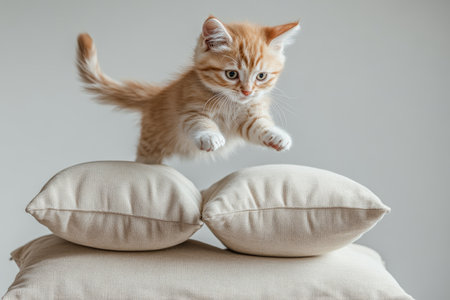Understanding the Importance of Fresh Perches, Toys, and Accessories
When it comes to caring for your pet bird, keeping their environment safe, stimulating, and healthy is essential. Regularly updating perches, toys, and cage accessories is more than just a matter of cleanliness—its about supporting your bird’s physical health and mental well-being. Old or worn-out cage items can harbor bacteria, develop sharp edges, or simply lose their appeal, all of which can negatively impact your birds happiness and quality of life. By routinely replacing these essentials, you help prevent boredom, reduce the risk of injury or illness, and provide ongoing enrichment that keeps your feathered friend active and engaged. Understanding why fresh cage items are so important is the first step in creating a thriving habitat where your bird can truly flourish.
2. Signs It’s Time to Replace Perches
Knowing when to replace your birds perches is crucial for their health and safety. Old or damaged perches can lead to foot problems, stress, and even injuries. To keep your feathered friend comfortable and healthy, it’s important to watch for both visual and physical cues that signal it’s time for a change. Here are some key signs to look out for:
Visual Cues
| Sign | Description |
|---|---|
| Cracks or Splinters | Visible cracks or splinters on wooden perches can injure your bird’s feet and harbor bacteria. |
| Fraying or Peeling | Perches made of rope or similar materials may start to fray or unravel, posing a risk of entanglement. |
| Discoloration | Stains or discoloration that doesn’t wash off may indicate mold, mildew, or bacteria growth. |
| Uneven Surface Wear | If a perch is worn down unevenly, it may no longer provide proper support for your bird’s feet. |
Physical Cues
- Loose Fittings: If the perch moves easily or cannot be securely attached to the cage, it should be replaced immediately to prevent accidents.
- Odor: Persistent unpleasant smells that don’t go away after cleaning could signal deep-set bacteria or rot within the perch material.
- Brittleness: Perches that feel soft, brittle, or break apart easily are unsafe and should be discarded right away.
How Often Should You Check?
It’s good practice to inspect all perches during your regular cage cleaning routine—at least once a week. Quick spot checks between cleanings can help catch early signs of wear before they become serious problems.
![]()
3. Toy Turnover: Keeping Playtime Safe and Engaging
Toys are essential for your bird’s mental and physical health, but they can quickly wear out or become unsafe if not regularly rotated or replaced. In American households, birds often spend a significant portion of their day inside their cages, making stimulating toys critical for preventing boredom and negative behaviors like feather plucking. To keep playtime both safe and engaging, it’s recommended to inspect your bird’s toys weekly for signs of damage such as frayed ropes, broken plastic, or sharp edges that could cause injury. Most avian experts suggest rotating toys every one to two weeks to maintain novelty and challenge your bird’s mind. Completely replace any toy that shows excessive wear or cannot be properly cleaned. By keeping a fresh rotation of different textures, shapes, and functions, you’ll ensure your bird remains interested and mentally stimulated while reducing the risk of hazards from broken or contaminated items. Remember, interactive toys—like puzzle feeders or foraging challenges—are especially beneficial and should be included in the rotation to mimic natural behaviors and support overall well-being.
4. General Accessory Guidelines: Bowls, Swings, and More
Everyday cage accessories such as food and water bowls, swings, ladders, and mirrors play a crucial role in your bird’s daily comfort and well-being. Regular inspection and timely replacement of these items not only promote good hygiene but also prevent health risks and boredom for your pet. Here are best practices for keeping these essentials in top condition:
Inspecting Accessories: What to Look For
Check all accessories at least once a week for cracks, chips, rust, or buildup of food debris. Damaged surfaces can harbor bacteria or even injure your bird. Plastic bowls may develop scratches that trap germs, while metal dishes can corrode over time. Swings, perches, and ladders should be free from fraying ropes or splintered wood that could harm your pet.
Replacement Frequency Guide
| Accessory Type | Inspection Frequency | Replacement Recommendation |
|---|---|---|
| Food & Water Bowls | Daily (cleaning), Weekly (damage check) | Replace every 6-12 months or if damaged |
| Swings & Ladders | Weekly | Replace if frayed, chewed, or unstable; typically every 1-2 years |
| Mirrors & Bells | Weekly | Replace if cracked or rusted; check annually for wear |
| Cage Liners/Trays | Daily (cleaning) | Replace as needed when stained or worn out |
Tips for Safer Accessories
Select accessories made from non-toxic materials approved for birds. Stainless steel or ceramic bowls are often preferred over plastic for durability and ease of cleaning. Always secure swings and ladders tightly to avoid accidents.
When in Doubt, Swap It Out!
If you notice any signs of damage, excessive wear, or difficulty cleaning an accessory thoroughly, it’s better to replace it sooner rather than later. Keeping your bird’s environment clean and safe supports their health and happiness.
5. Cleaning vs. Replacing: Knowing the Difference
When it comes to caring for your bird’s habitat, knowing when a thorough cleaning is enough and when it’s time to buy new perches, toys, or accessories can make all the difference in your feathered friend’s health and happiness. Regular cleaning helps control bacteria, mold, and odor, keeping your bird’s environment safe and inviting. However, even the best cleaning routine can’t restore items that are worn out, damaged, or unsafe.
When a Good Cleaning Is Enough
Many perches and toys—especially those made of durable materials like stainless steel, hard plastic, or natural wood—can last for months or even years with proper care. Weekly washing with bird-safe soap and hot water usually removes debris and germs. Always rinse thoroughly to prevent residue. If an item still looks sturdy and has no sharp edges or deep cracks after cleaning, it’s likely good to go back in the cage.
When It’s Time to Replace
If you notice frayed ropes, cracked plastics, splintered wood, or loose parts on any accessory, it’s safer to replace them immediately. Damaged toys and perches can cause injuries or pose a choking hazard. Additionally, if persistent stains or odors linger after cleaning—or if mildew is present—it’s time to invest in new gear. Remember that frequent chewing and play can wear down items faster than you’d expect!
Stay Proactive
Regularly inspect all cage items during your weekly cleanings so you don’t miss signs of damage. Setting a schedule for both deep cleaning and rotation of new toys will help you keep track of what needs attention.
Tip:
Consider keeping extra perches and toys on hand so you’re never caught off guard when something needs replacing.
6. Creating a Replacement Schedule That Works for You
Keeping your birds habitat engaging and safe doesnt have to be overwhelming. Setting up a simple, consistent replacement schedule can make all the difference for both you and your feathered friend. Start by marking your calendar or setting reminders on your phone for regular check-ins—monthly is a great place to begin. During these checks, inspect perches, toys, and accessories for signs of wear, damage, or buildup of dirt that could affect your bird’s health.
Customize Your Routine
No two birds or households are the same, so tailor your routine to fit your lifestyle and your bird’s needs. If you notice certain toys wear out faster due to enthusiastic play, adjust their replacement frequency accordingly. Similarly, natural wooden perches may need replacing more often than synthetic ones. Consider creating a checklist that includes cleaning tasks and swap-out dates for each accessory to stay organized.
Stay Flexible and Observant
While having a set schedule helps, staying flexible is key. Keep an eye out for sudden changes in your bird’s behavior—like less interest in toys or excessive chewing on specific perches—which might signal it’s time for something new even if you’re not due for a replacement yet. Always prioritize safety: if something looks broken or unsafe, replace it right away.
Make It Fun and Rewarding
Involve the whole family in updating your bird’s environment! Rotate new toys or perches during scheduled maintenance days to keep things exciting for your pet. Not only does this benefit your bird’s mental and physical well-being, but it also strengthens the bond you share. By establishing a thoughtful replacement schedule that works for you, you’ll create a fresh, stimulating, and healthy home for your feathered companion all year long.


